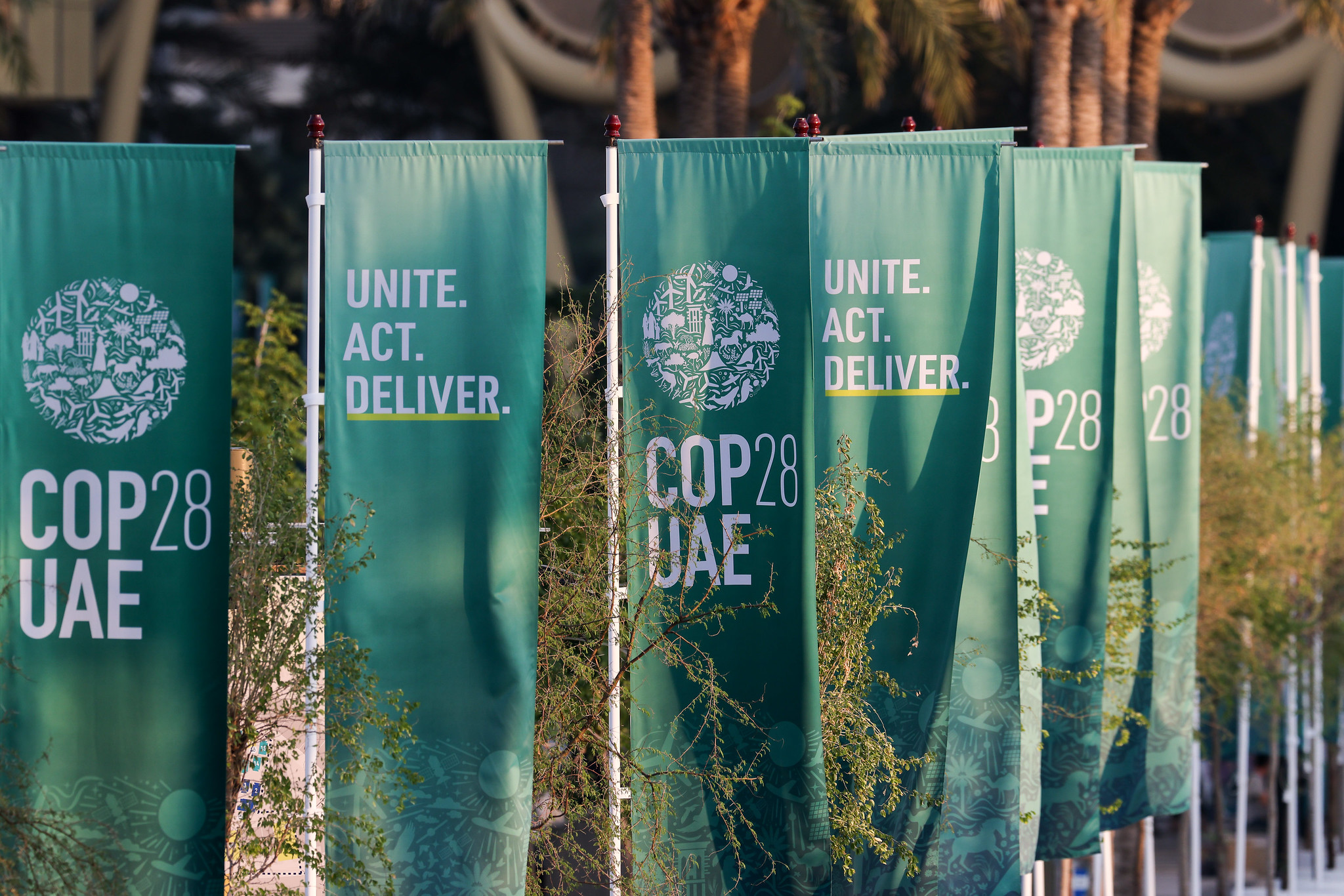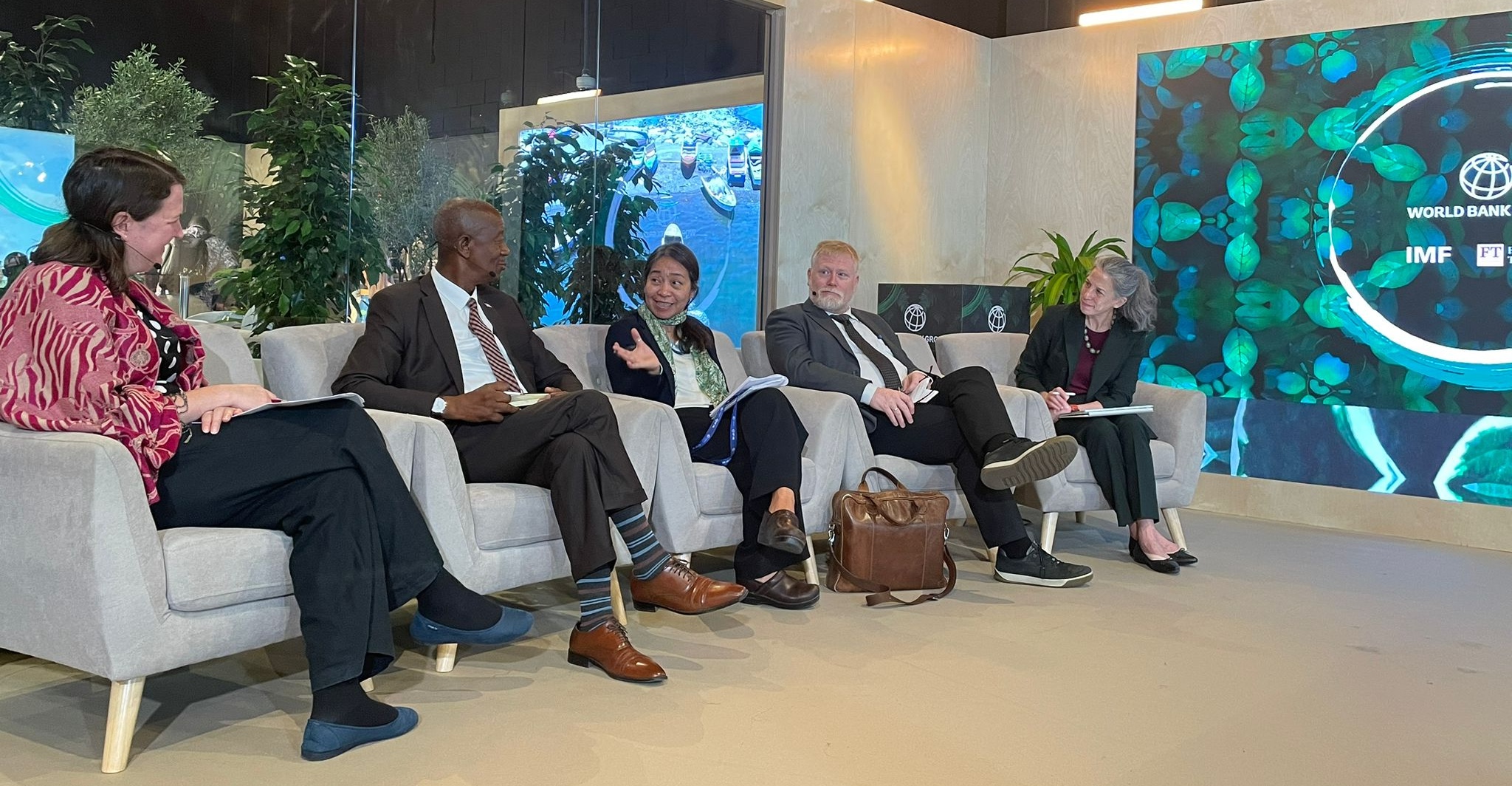2023-12-18
By Jeremy Gaunt
With demand for land increasing around the world – boosted by rising populations, urbanisation, and growing wealth – a re-evaluation is needed in how to designate what that land is being used for.
It may well be that from an environmental standpoint, all land is already being used. Just because it is undeveloped, as is the case in many territories that are home to Indigenous Peoples, does not mean it is standing idle.
Such a case was made at a World Bank-organised panel on the side-lines of COP28 in Dubai, where panellists from land rights organisations and governments discussed land use as it relates to meeting global commitments to combat climate change.
“There is no such thing as free land, or unused land, either for people or for the ecology,” said Øyvind Dahl, policy director for Norway’s International Climate and Forest Initiative (NICFI). “Our systems depend on recognising that all land is in use.”

Christopher Pike/COP28
This idea that, for just one example, “unused” forests are actually working for people as carbon sinks goes to the heart of ensuring the rights of Indigenous Peoples and traditional communities who are stewards of some 80 percent of the world’s biodiversity.
Indigenous Peoples’ contributions in helping safeguard biodiversity and mitigating climate change have been well-documented in recent years. A United Nations report in 2021, for example, underlined with data and research that forests managed by Indigenous Peoples tend to be better preserved than those that are not.
Nonette Royo, Tenure Facility executive director, said that valuing this work by Indigenous Peoples is crucial to protecting the environment and reaching global targets. Their experiences in intervening and valuing nature result from being part of nature, she said.
Mapping as an important tool
Part of the land use process is mapping. In short, some traditional lands do not have official boundaries and these need to be formalised to ensure their protection.
Royo noted that Tenure Facility will have helped map some 18 million hectares of land – an area around the size of Cambodia – this year and is expected to double that in 2024.
But she noted that drawing a map is not just technical. It requires a collective and social element, that is, bringing people together.
“When you draw boundaries, there’s conflict that comes with that,” Royo said. “So that kind of process takes a lot of social consultations.”

Liberia’s rule of four and a bit of insanity
An example of how governments can recognise the value of traditional lands came from Liberia. Adams Manobah, chairman of the Liberia Land Authority, said that for many years indigenous and traditional communities had no rights to their land. Indeed, the government only recognised two types of land ownership – government and private.
That changed with a landmark Land Rights Law that came into effect in 2018. There are now four categories – government, private, public, and community.
An example of what the latter means came in July, when the land authority issued eight Statutory Land Deeds to traditional clans that had previously had no such rights.
Crucially, Manobah said the Land Rights Law limits what the government can do with land without free, prior, and informed consent.
“That means for any government agency or the central government to take away any land from any community, it has to meet the consent of the community,” he said.
"There is no such thing as free land, or unused land, either for people or for the ecology. Our systems depend on recognising that all land is in use."
Slashing bureaucracy
But while the panellists agreed that much progress has been made, particularly since COP26 in Glasgow that delivered $1.7 billion in funding for Indigenous Peoples to protect he environment, numerous hurdles still exist.
Maggie Charnley, head of the UK Foreign Office’s International Forests Unit, said that COP26’s financial pledge should be more than just providing money. It should be a challenge to the donors to think about things differently.
“If we insist that the Northern norms are adopted by (indigenous and traditional communities), we begin in turn to destroy what is so precious about a different worldview,” she said.
“We need to recognise that simply by encouraging these groups to thrive, whatever those financial needs are, whether it’s health or access to education, enabling those communities to thrive and do what they do better than the rest of us, is an aim in itself.”
Charnley also bemoaned the bureaucracy that attends major financing such as that currently being provided. It amounts to legions of lawyers and reams of paperwork. “That level of bureaucracy is totally insane,” she said.
Articles